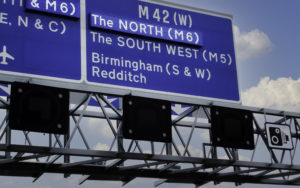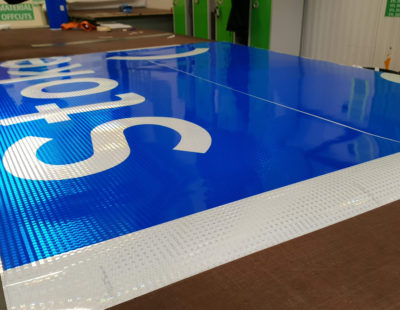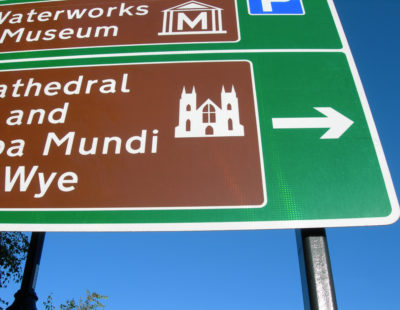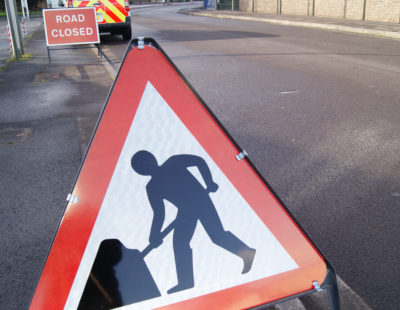There are hundreds of signs used on roads across the UK to convey important safety information, road guidance, or even highlight upcoming attractions. Each variation in colour, shape and symbol, relates to different, important messages.
Road traffic safety signs play an integral role in keeping road users safe, including drivers, pedestrians, cyclists and highway workers. Without these signs, road users could risk facing sudden hazardous surprises, endangering others and themselves.
In this definitive guide to road traffic safety signs, our experts at Lakeside Group provide an overview of road traffic safety signs, including what they are made of, the various types and associated regulations. As UK suppliers of leading retroreflective materials with over 30 years’ experience in traffic safety industries and industry leading product partners, we know all there is to know about road traffic signs. View our full range of certified traffic and safety reflective products.
About Lakeside Group, leading reflective materials suppliers in the UK >
What are road traffic signs made of?
Road signs are made from durable materials due to their exterior placement. It is important that road signs remain in good condition for long periods as they must always be clearly visible and legible by road users. As there are so many signs across the UK in various hard-to-access placements, continued replacements and inspection is near impossible.
The main frame of road traffic signs are made from a sturdy material, usually aluminium or aluminium composite, and has the role of keeping the sign in place and usually upright. The sign face is always made from a retroreflective material. This is significant as it means that sign faces are always conspicuous – during light and dark hours – due to reflectivity. These sign face materials work by reflecting light back to the light source – in this instance, car headlights at night.
To find out more about how reflective materials work, and the various technologies available, read our guide to reflective sheeting for traffic signs.
Types of road traffic safety signs
Within the UK, there are three main types of road traffic signs. There are additional variations according to whether signs are temporary or permanent, as will be explored below.
Over the years that motoring has been wildly accessible, road traffic signs have become more regulated and uniformed. This regulated uniformity was required in order to avoid confusion and keep road users safe, regardless of where within the UK they are.
The three sign types within the UK are:
- – Warning: warn of hazards, i.e. ‘sharp bends’ sign. Usually triangular and red.
- – Regulatory: give notice of requirements, prohibitions or restrictions, i.e. ‘give way’ signs. Usually round.
- – Information, directional, tourist: provide information about routes and locations, i.e. motorway service station signs. Usually rectangular.
The two types most relevant to road traffic safety are warning and regulatory signs. These signs provide important information that affect drivers individually (i.e. if a hazard is ahead) and collectively (i.e. road user priority).
See examples of each sign type in the ‘Know Your Traffic Signs’ guide from The Highway Code.
Temporary vs permanent road traffic safety signs
Road traffic safety signs are either temporary or permanent – they are either installed temporarily as mobile pieces, or installed in place for a long time. For example, warning signs at temporary street works may be there for weeks then removed (temporary), whereas motorway signs are there for years (permanent).
The function of both temporary and permanent traffic signs is usually the same: warn, instruct and inform road users for safety reasons. Additionally, due to the need for uniformity, the look of these signs is the same, according to the use.
There are, however, differences in the regulations regarding temporary and permanent traffic signs. Regarding permanent traffic signs, there are numerous associated regulations. Find out more with our blog on permanent traffic signs regulations.
For temporary traffic signs, the most commonly referred to regulations are Chapter 8 of the Traffic Signs Manual and the ‘Safety At Street Works and Road Works’ code of practice which instructs on the use of signage at temporary street works.
Temporary Traffic Signs Regulations >
Road traffic sign regulations
All road traffic signs in the UK, regardless of whether they are temporary or permanent, must conform to the Traffic Signs Regulations and General Directions (2016) – TSRGD – from the Department of Transport. These directions are the main legislation for road traffic signs.
To make this key legislation more understandable and actionable, the Traffic Signs Manual was created; a document containing eight chapters of guidance on the application of TSRGD. The manual outlines actionable guidance on the requirements prescribed by TSRGD in informative and illustrative ways.
Who is responsible for road traffic safety signs?
Across the UK, responsibility for road traffic safety signs is divided between national administrations, local authorities, and private landowners. For public highways, regardless of who is responsible, traffic signs must be in accordance with TSRGD, guided by the Traffic Signs Manual, unless otherwise dictated by the state.
National administrations – Highways Agency England, Welsh Assembly Government and Scottish Executive – are responsible for the signage of the majority of motorways and some “A” roads. These highways usually connect key areas, including cities, towns, ports and airports.
Local or regional authorities handle road traffic signage of most other roads; some motorways, remaining “A” roads, and public roads. Private land owners must also ensure road traffic signs are compliant, as the Road Traffic Regulation Act 1984 extends to private land as well as public. For example, retail car parks must be appropriately signed for road user safety.
The Association for Road Traffic Safety and Management has put together a guide to traffic signs on private land explaining more.
Certified road sign retroreflective materials with Lakeside Group
In collaboration with our industry leading product partners, Avery Dennison and Aura Optical Systems, we at Lakeside Group provide certified glass bead and micro prismatic retroreflective materials for road traffic signs, vehicles, and more. With warranties available for up to 15 years on certain products, we ensure our compliant road traffic signs last the years and remain conspicuous. Check out our full range of products.
If you’re looking for unrivalled durability for your permanent traffic signage, check out the below video to find out more about our winning combination of 15 year R3C micro prismatic sheeting, durable TrafficJet inks and OL-1200 dew-resistant overlay film.
To find out more about our products and services, or to learn about how we can help you achieve compliant road traffic signs, don’t hesitate to get in touch with our team.




